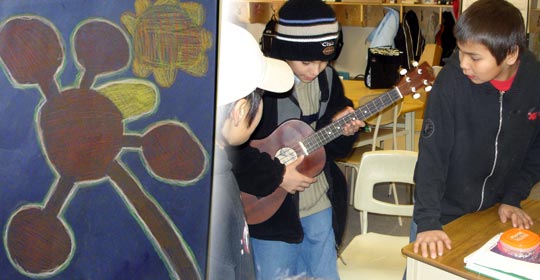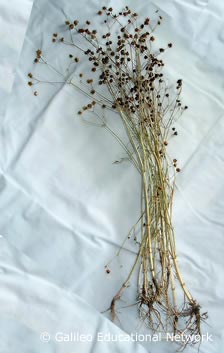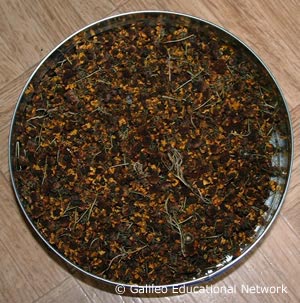Aomaohksikimii – (Red Tea) – Common Tickseed (Coreopsis leavenworthii).

A pastel drawing by a Shelby. Shelby, Noah and Bryton collaborate to compose an original soundtrack for the website.
Learn more about Red Tea:
Red Tea

Dried red tea plant.
Red tea is a plant that grows in swampy areas according to Elder Shirley Mountain Horse. Elder Adam Delaney told us that it has yellow flowers with a brown centre that are about 3 cm wide. The plant grows about 45 cm tall. Red Tea was identified by Ryan Heavyhead in June 2017 as Common Tickseed or (Coreopsis leavenworthii).
Sandra Singer told us that you could cut the plant into pieces when it is dry or fresh, to use later on to make a tea. You can mix the Red Tea with Mint for flavour. The tea is good as a general tonic and it helps to purify your blood.
We do not know the botanical nor the Latin name for this plant because we studied this plant outside of growing season and we could not compare the dried plant with our reference books. This is a good example of why this project is important. If we do not research the plants while we have people that still know them, we might lose this knowledge. Knowing what the plant looks like when it is alive will help us find the correct Latin name. Latin is a language used by botanists to identify plants because many plants grow in different parts of the world and different groups of people have different names for the same plant. Knowing the Latin name will help keep our knowledge of the plant safe for future generations all around the world.
Thé rouge

Crushed red tea ready for making tea.
Selon l’aînée Shirley Mountain Horse, le thé rouge pousse dans les régions marécageuses. Pour sa part, l’aîné Adam Delaney nous a expliqué que cette plante a des fleurs jaunes au centre brun. Ces fleurs mesurent environ 3 centimètres de large et la plante atteint 45 centimètres de haut.
Sandra Singer nous a dit que nous pouvons couper cette plante en petits morceaux quand elle est sèche ou fraîche afin d’en faire du thé plus tard. Le thé rouge se mélange bien avec la menthe. Ce thé est bon comme tonique général. De plus, il aide à purifier le sang.
Nous ne connaissons pas le nom botanique ou latin de cette plante, car lorsque nous l’avons étudiée, ce n’était pas la saison de croissance et nous n’avons pas pu comparer la plante séchée à ce que nous avons trouvé dans nos livres de référence. Voilà donc un bon exemple de l’importance de ce projet. Si nous ne faisons pas de recherches pendant qu’il existe encore des personnes qui connaissent les plantes, leurs connaissances risqueront de se perdre. Quand nous saurons à quoi ressemble cette plante quand elle vit, nous pourrons trouver son nom latin. Le latin est une langue qu’emploient les botanistes pour identifier les plantes, car d’un endroit à l’autre du globe, les mêmes plantes ont différents noms. Par contre, le nom latin des plantes est universel. Grâce au nom latin des plantes, les générations futures des quatre coins de la planète sauront toujours de quelles plantes il s’agit.

Photo credit: Sherri Rinkel-MacKay

Photo credit: Sherri Rinkel-MacKay
- Delaney, A. (personal communication November 12, 2004) referred to Red Tea.
- Mountain Horse, S. (personal communication October 4,2004)referred to Red Tea.
- Singer, S. (personal communication October 27, 2004) referred to Red Tea.





